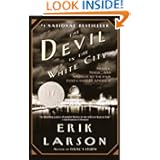
The Judgment of Paris: The Revolutionary Decade that Gave the World Impressionism
by Ross King
My first book of the summer.
Ross King, whose other art history books I have read and enjoyed – Brunelleschi’s Dome and Michelangelo and the Pope’s Ceiling – is a writer who really gets the idea of social transformation. That is probably why I am so attracted to the late nineteenth century, the era in which the book is set. While society was changing, artistic tastes were slowly catching up. King does a beautiful job of illustrating this by chronicling and juxtaposing the rise and fall of artists Ernest Meissonier and Edouard Manet. Aristocratic tastes and subjects fell while more common, perhaps provocative, ones rose. Impressionism is so popular today that it is intriguing to read about the original intensity of reactions against its newness. Like any technology or social movement, artistic styles are reflective of their social surroundings.
It’s a good lesson for me; I’m the person who grinds my teeth when I see people glued to their cellphones, yet I have three impressionist posters hanging in my house. How revolutionary I would have been in the 1870s.

The Devil in the White City: Murder, Magic, and Madness at the Fair that Changed America
By Erik Larson
My second book of the summer turned out to be an easy read, highly enjoyable even though some of its subject matter is dark. It is the story of Chicago’s World’s Fair, held to honour the 400th anniversary of Christopher Columbus’ “discovery” of America, though technically it opened in 1893 rather than 1892. The parallel story is of a medical doctor who goes on a secret murderous rampage of young women and their children who stay in his hotel.
While the book is interesting in its contrasts of the two main characters, fair lead Daniel Burnham and murderer H.H. Holmes, its main interest for me is the description of society in the 1880s: the easing formality between men and women, the competition between New York and Chicago, and between Chicago and Paris, the previous host of the world’s fair. In third or fourth year university I took a course on popular culture in which I read a book called Highbrow/ Lowbrow: The Emergence of Cultural Hierarchy in America that gave me my first introduction to the White City, the nickname for the buildings designed for the fair that were all painted white. I can’t recall if they were highbrow or lowbrow, so I’ll guess lowbrow.
Though this is not technically a history book (unusual for me) it is well researched by Larson, an investigative journalist specializing in true crime.